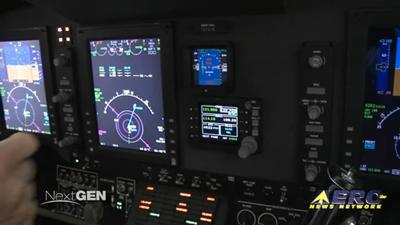Wed, Feb 22, 2017
Focuses On Adherence To Proper Test Procedures
The FAA has released a Safety Alert for Operators (SAFO) directed towards personnel involved with ground testing of aircraft Air Traffic Control (ATC) transponders and ADS-B OUT equipment. The SAFO points out the importance of adhering to proper test procedures and the hazards associated with improper testing.

The FAA has received reports of transponder and ADS-B OUT system ground test events in which information, including simulated altitude, was transmitted from the test aircraft and received by aircraft inflight. In at least one instance, an ADS-B OUT system ground test created a false airborne target that generated a Traffic Alert and Collision Avoidance System II (TCAS II) Resolution Advisory (RA) on a Boeing 737 aircraft on approach. Pilot reaction to this RA required unnecessary maneuvering in congested airspace and initiated ATC re-sequencing actions that affected multiple aircraft and negatively impacted operations in the area for about 30 minutes.
Transponders and ADS-B OUT systems operating under test conditions transmit specific information about the aircraft, including position and altitude data. These tests frequently involve a check of the aircraft’s altimetry system in which air pressure is induced into the pitot static system to simulate operation at various altitudes. In cases where transmission lines are not attached directly to test equipment, antenna shielding must be used to prevent propagation of test signals with potential to interfere with ATC operations or TCAS-equipped aircraft operating in the area.
The FAA recommends that repair stations and maintenance personnel performing transponder and ADS-B OUT system testing evaluate the adequacy of their procedures and adhere to proper test procedures to prevent uninhibited system transmission that may affect ATC operations or airborne aircraft. The FAA also recommends that applicable maintenance personnel be aware of any local requirements to alert ATC of impending testing, and to review relevant guidance contained in the latest revisions of:
AC 29-151, Airworthiness Approval of Traffic Alert and Collision Avoidance Systems (TCAS II), Versions 7.0 and 7.1 and Associated Mode S Transponders;
AC 43.6, Altitude Reporting Equipment and Transponder System Maintenance and Inspection Practices; and
AC 20-165, Airworthiness Approval of Automatic Dependent Surveillance - Broadcast OUT Systems.
(Source: FAA)
More News
From 2014 (YouTube Version): One Of The Airshow World's Pre-Eminent Formation Teams Chats About The State Of The Industry At EAA AirVenture 2014, ANN News Editor Tom Patton gets th>[...]
Tactical Air Navigation (TACAN) An ultra-high frequency electronic rho-theta air navigation aid which provides suitably equipped aircraft a continuous indication of bearing and dis>[...]
Aero Linx: Doobert Hi, we're Chris & Rachael Roy, founders and owners of Doobert. Chris is a technology guy in his “day” job and used his experience to create Doobe>[...]
The Airplane Was Spinning In A Nose-Down Attitude Before It Impacted Terrain On June 20, 2025, at 0900 eastern daylight time, a Pitts Aerobatics S-2B, N79AV, was destroyed when it >[...]
Also: United Elite Sues, Newark ATC Transitions, Discovery Moves?, Textron @ KOSH The Commemorative Air Force Airbase Arizona is taking its “Flying Legends of Victory Tour&rd>[...]
 Classic Aero-TV: Up Close And Personal - The Aeroshell Aerobatic Team at Oshkosh
Classic Aero-TV: Up Close And Personal - The Aeroshell Aerobatic Team at Oshkosh ANN's Daily Aero-Term (07.13.25): Tactical Air Navigation (TACAN)
ANN's Daily Aero-Term (07.13.25): Tactical Air Navigation (TACAN) ANN's Daily Aero-Linx (07.13.25)
ANN's Daily Aero-Linx (07.13.25) NTSB Prelim: Pitts S2
NTSB Prelim: Pitts S2 Airborne 07.09.25: B-17 Sentimental Journey, Airport Scandal, NORAD Intercepts
Airborne 07.09.25: B-17 Sentimental Journey, Airport Scandal, NORAD Intercepts



